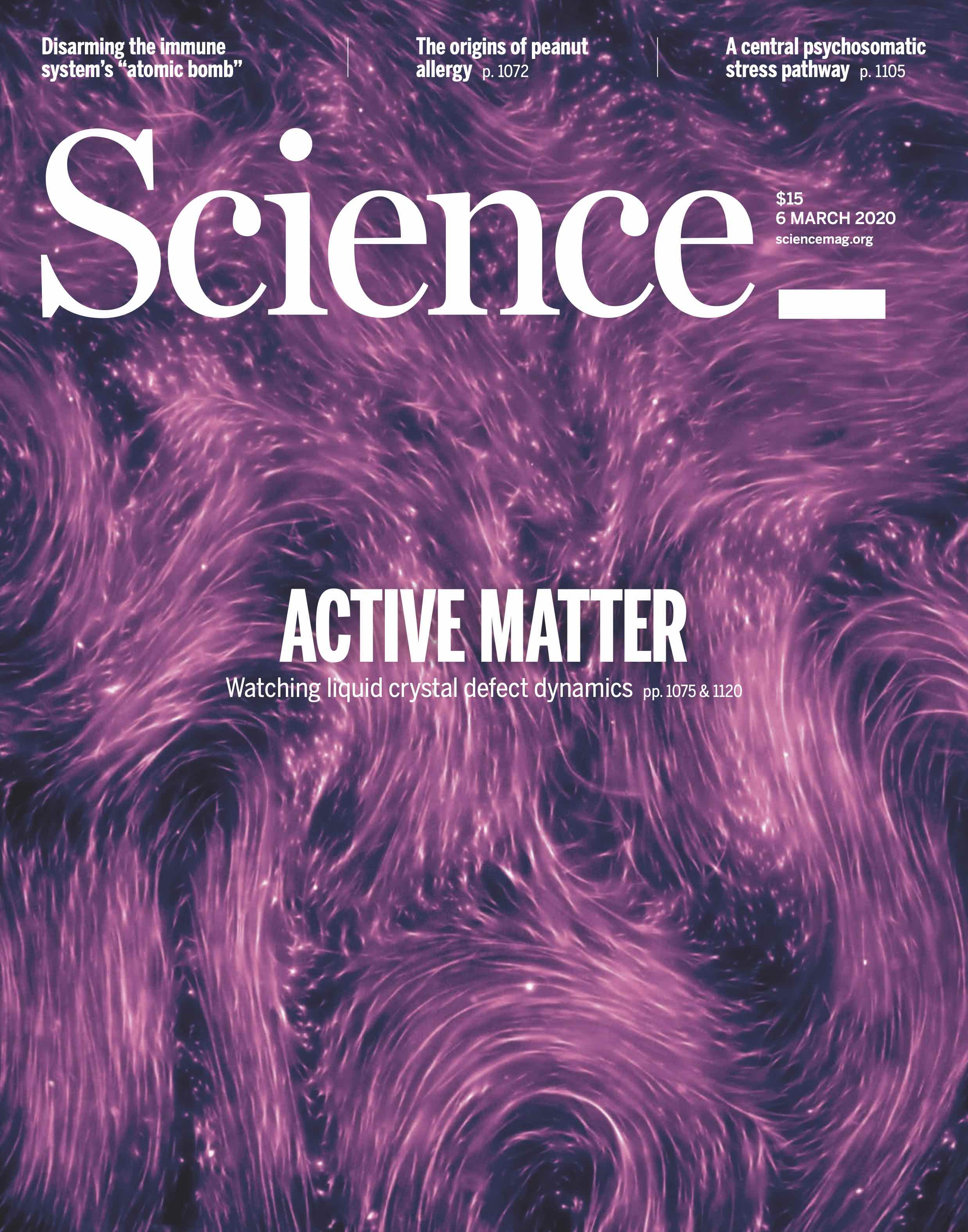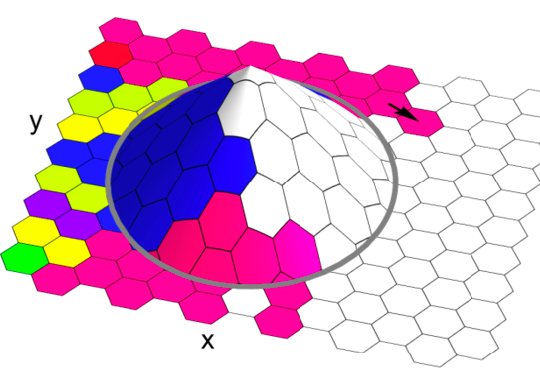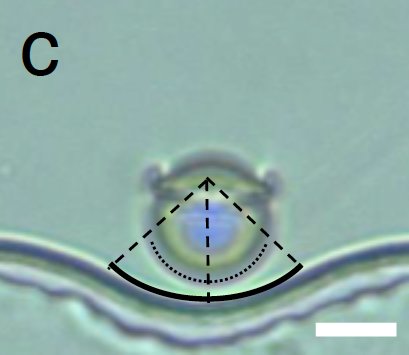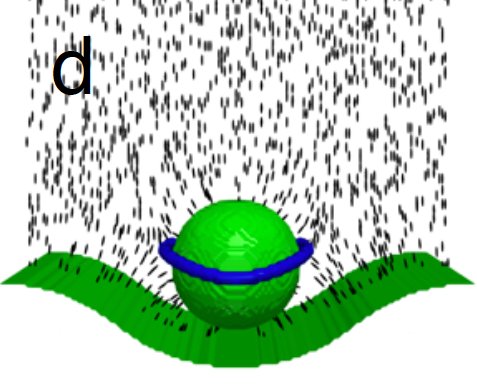Active Liquid Crystals
|
Matter in living systems is inherently far from thermodynamic equilibrium; so too are many non-living systems. On scales from intracellular biofilaments to flocks of birds, we find active matter that continually converts internal energy into motion. Often the organization of self-driven units making up the material—biomolecules, bacteria, birds, etc.—organize according to rules familiar from equilibrium physics, but with internally driven motion producing dramatically different dynamics. We are researching the behavior of active liquid crystals, materials with spontaneous alignment at small scales but internally driven chaotic flows at larger scales. In particular, we are modeling an experimental system consisting of dense suspensions of microtubules and their motor protein kinesin. Emergent flow instabilities are marked by the creation, motion, and annihilation of topological defects. Our work aims to understand the complex dynamics of 3D active liquid crystals through the geometry of defect loops and lines. Click here to see our paper in Science. |
Population Genetics in Biological Range Expansions
|
|
When a species expands into new territory, genetic diversity is lost rapidly at the population front. Concepts from statistical physics and differential geometry shed light on how spatial structure—in the population and in the environment—can change evolutionary outcomes. Our recent work has shown how “topographic lensing” effects from bumpy terrain can affect genetic diversity and play a dramatic role in deciding which ancestral lineages dominate in the new territory. Europhysics Letters (2018) Current work is focused on how the environment’s spatial structure and the front propagation dynamics affect the coalescence of ancestral lineages in the reverse-time view. This affects, for example, our estimates of how long ago two organisms had a common ancestor. |
Guiding Self-Organization with Topological Defects in Nematic Liquid Crystals
|
In nematic liquid crystals, topological defects called disclinations form lines and loops, and guide colloidal self-organization driven by the liquid crystal’s elasticity. Numerical modeling provides important insights into the internal structure and elastic energy landscape of the liquid crystal. Geometrically patterned surfaces deform disclination loops, and provide control over colloidal trajectories and equilibrium configurations. Nature Communications (2018) |
|
| High-genus surfaces lead to networks of disclination lines and loops. PNAS 2016 | 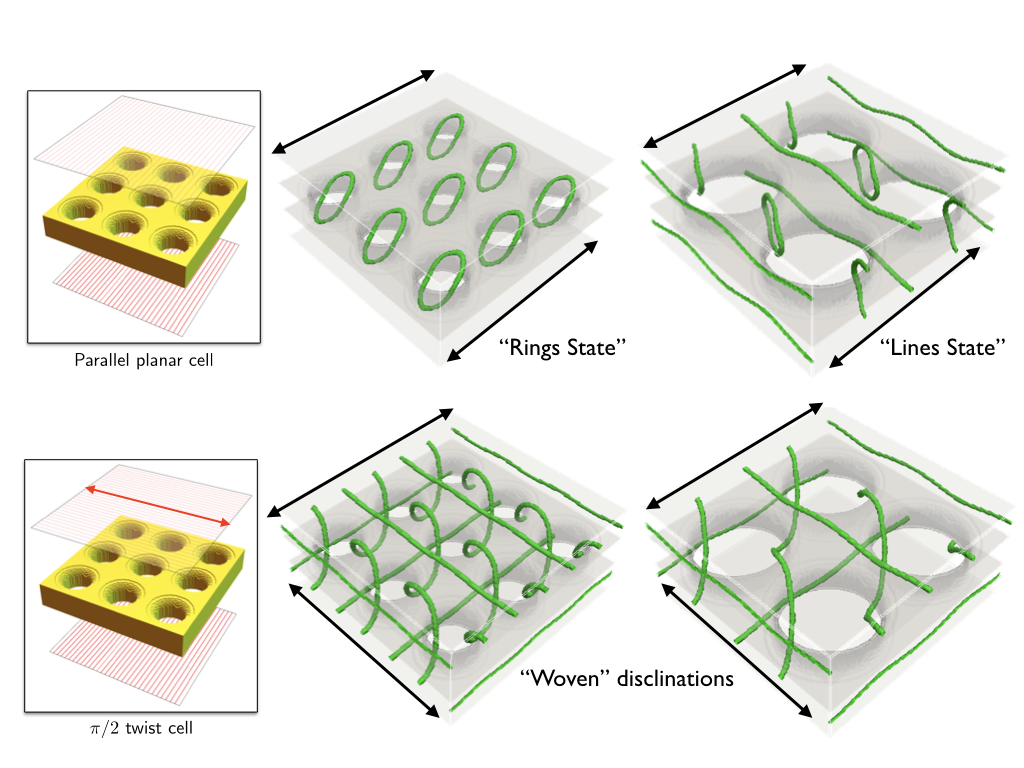
|
Self-assembled defect arrays in lamellar liquid crystals
|
In the smectic liquid crystal phase, molecules are ordered in layers of single particle thickness. The constraint of constant layer spacing results in a set of defect motifs, including focal conic domains. We model the material patterning that results from the self-assembly of these defects, and the effects on colloidal and nanoparticle inclusions. Rows of aligned focal conic domains emerge as a liquid crystal on a fluid substrate is cooled from the nematic to the smectic phase. Nature Communications (2017) |
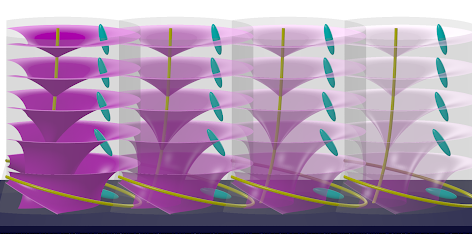
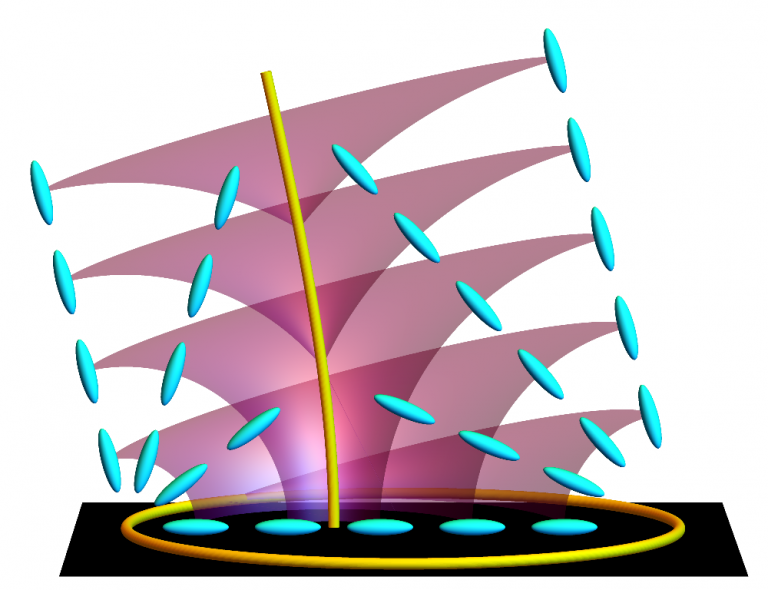
|
| In free-standing smectic films, focal conic domains provide “armor” to metastable colloidal assemblies formed through a combination of elasticity and capillarity. Langmuir (2018) | 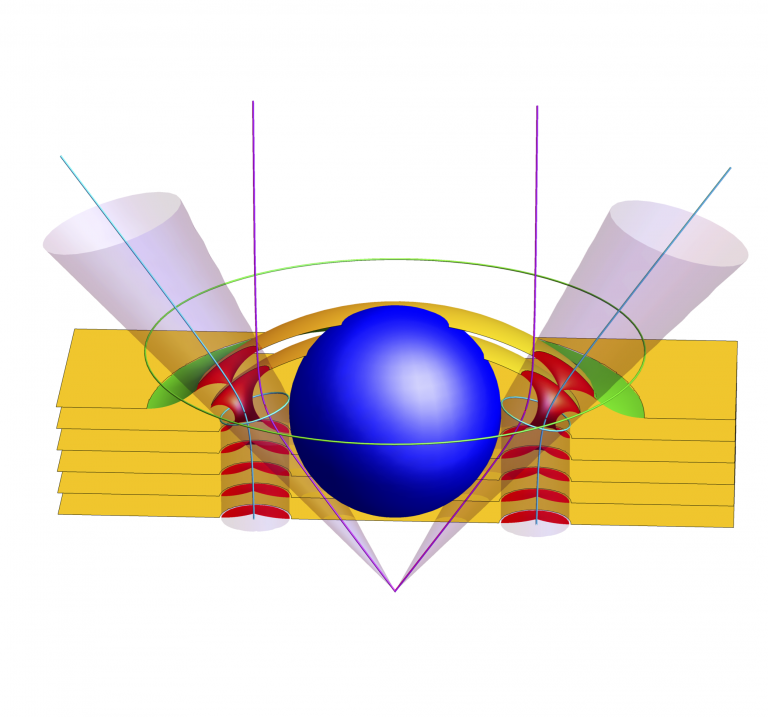
|
Tubular crystals
In 2D colloidal crystals of cylindrical topology, separation of dislocation pairs (green+magenta sites) changes the crystal’s chirality (or helical pitch), radius, and tube axis orientation. Physical Review E (2016)

|
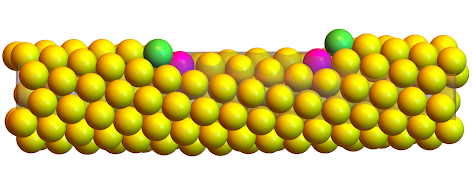
|

|


